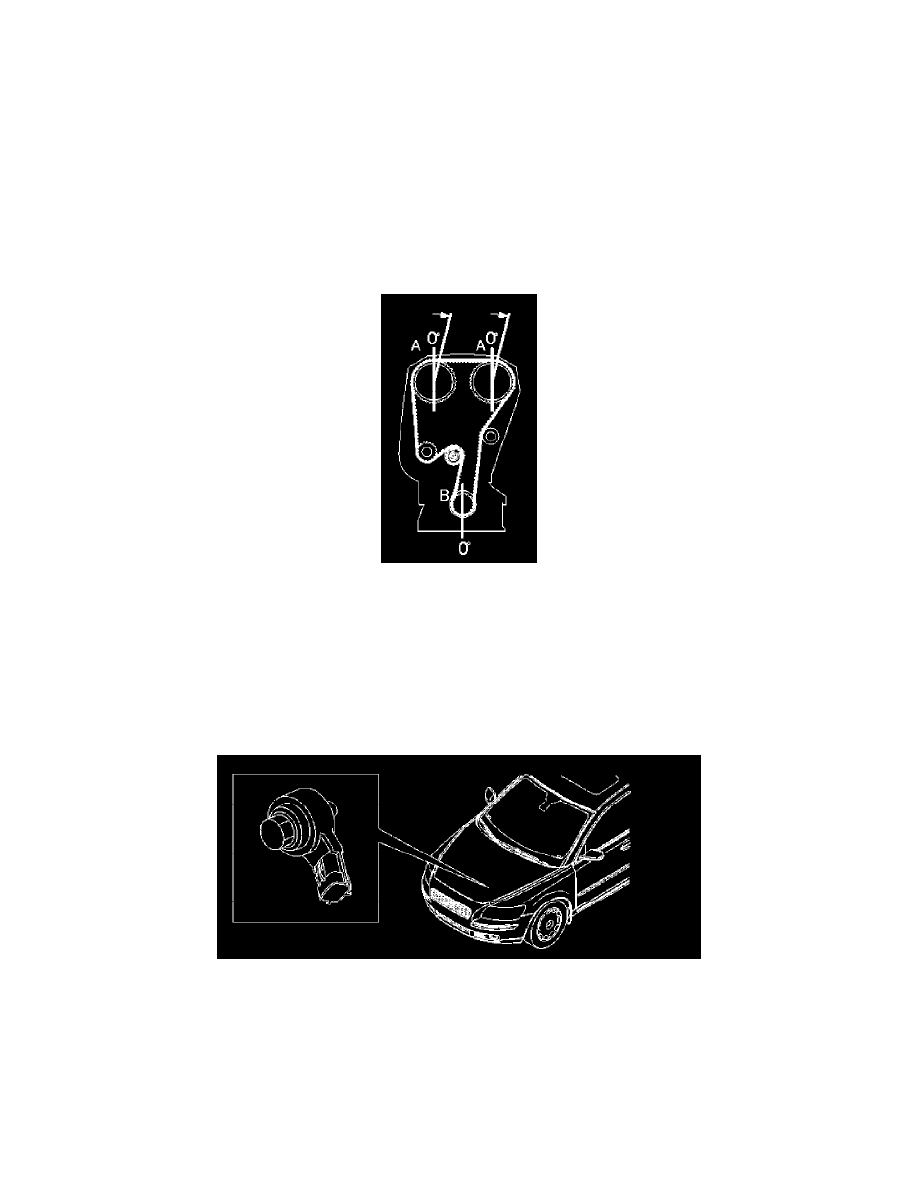V50 L5-2.4L VIN 38 B5244S4 (2006)

The valve consists of an electro-magnetic valve with a spring-loaded piston. There are slits in the piston which channel the engine lubricating oil to the
CVVT unit by moving the piston in the reset valve. The continuous variable valve timing CVVT) unit turns the camshaft (the camshaft timing changes).
The direction in which the camshaft turns depends on the chamber in the CVVT unit which is supplied with oil (pressure).
The system relay supplies the reset valve with voltage. The valve is grounded (control stage) in the engine control module (ECM). When the valve is
grounded using a pulse width modulation (PWM) signal, the oil flow in the valve can be regulated to the different chambers in the continuous variable
valve timing (CVVT) unit at variable rates. This allow the angle of the camshaft to be changed precisely and smoothly. The engine control module
(ECM) can diagnose the camshaft reset valve.
The valve is located on the cylinder head above the intake camshaft.
Camshaft Control (CVVT)
Camshaft Control (CVVT)
When the camshaft (A) is set at the factory, it is aligned with the position of the crankshaft (B). The position of the camshaft in relation to the crankshaft
is designated the camshaft 0 position. During camshaft (CVVT) control, the 0 position of the camshaft is advanced so that the opening and closing of the
intake valves can be changed to relative to the camshaft. By controlling the camshaft (the camshaft is regulated from its 0 position) the performance of
the engine is increased, the idle speed quality is improved and the emissions are reduced.
There are diagnostics for this function.
Knock Control
Knock Control
Knock occurs in the combustion chamber when the fuel and air mixture self ignites. This can occur either before or after the spark plug has produced an
ignition spark. In both cases the gas in two or more places ignites in the combustion chamber.
This results in an extremely fast combustion process with flames from several directions. When these flames collide, the pressure in the cylinder
increases rapidly and there is a mechanical knocking sound.
If any of the cylinders knock there is a specific type of vibration in the cylinder block. These vibrations are transferred to the knock sensor (KS) which is
screwed into place in the cylinder block. The resulting mechanical stress in the piezo electrical material in the knock sensors generates a voltage. The
engine control module (ECM) can then determine which cylinder is knocking with the help of the camshaft position (CMP) sensor and the engine speed
(RPM) sensor.
